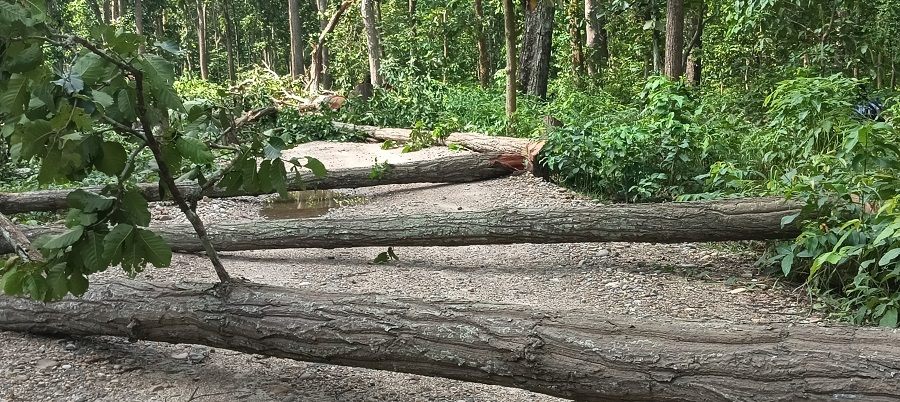
 Rhododendron Forest of Nepal, Khopra
Rhododendron Forest of Nepal, KhopraSource: acrossHIMALAYA[/caption] According to Dr Yadav Upreti, one of the five researchers who has carried out extensive research on flora in Province 1, “Nepal has 33 species of rhododendron and 31 are found in the province 1 alone.” Rhododendron has a lot of ecological importance. Besides that, it also helps in the expansion of tourism business in Nepal. There is an annual Lali Gurans Festival in Helambu during the peak flowering season. The enchanting beauty and the fragrance of the rhododendron flowers draw thousands of trekkers to Nepal. Places like Langtang National Park, Ghorepani Poon Hill, Makalubarun National Park, Milke Danda-Jaljale Himal, the Upper Tamur River Valley and the Annapurna Conservation Area are even famous for rhododendron trek. These beautiful flowering forests beneath the majestic Himalaya blend well together and it’s definitely worth a trip from any corner of the world. Bedside It’s Enchanting Beauty The wood of rhododendron can be used for furniture, house beams and fencing purposes. Some communities in the hills use the wood in making household utensils, farming tool handles and gunstocks. The indigenous people including Raute and Chepang communities pickle the flower to eat with dishes. Essential oils extracted from some species of rhododendron can be used in perfumes and incense. The flower is also offered in hill temples. Rhododendron is also a source of traditional medicine and herbal teas. Bark extract is used in the treatment of coughs, dysentery and diarrhoea. The juice of the flower is used by the common folklore in Nepal to dissolve fish bones stuck in the throat. Why Conserve? Apparently, Rhododendron is falling into the list of endangered species of flora due to negligence and lack of proper conservation efforts by the concerned authorities. Its over-exploiting but hardly any research studies are carried out in these species. It is extensively used as firewood and increasing population pressure has been steadily reducing both the area covered and density of the forests. According to Sunil Kumar Singh(The Kathmandu Post), forest officer at the Tehrathum forest office, Dense rhododendron forests that once covered the area are shrinking every year, “People living around forest areas depend on the forest for firewood and also involve in timber smuggling. They have also encroached upon the forestland.” [caption id="attachment_2850" align="alignright" width="391"]
 Rhododendron forest against the backdrop of Mount Dhaulagiri in Poon Hill, Myagdi. Photo: Hari Krishna Gautam/Republica[/caption]
Despite the Rhododendron Conservation Action Plan adopted by Nepal Government, there are challenges aplenty in conserving various species of rhododendron especially due to the haphazard development works and forest encroachment by the locals and haphazard infrastructure development on the lush rhododendron forests.
Local people must be made aware of the illegal trade and the alternative way for their timber demand. Concerned authorities must identify rhododendron habitats, manage pastures and plant rhododendron saplings in the forests. The government has to encourage villagers to use improved cooking stoves and promote alternative energy sources.
Rhododendron forest against the backdrop of Mount Dhaulagiri in Poon Hill, Myagdi. Photo: Hari Krishna Gautam/Republica[/caption]
Despite the Rhododendron Conservation Action Plan adopted by Nepal Government, there are challenges aplenty in conserving various species of rhododendron especially due to the haphazard development works and forest encroachment by the locals and haphazard infrastructure development on the lush rhododendron forests.
Local people must be made aware of the illegal trade and the alternative way for their timber demand. Concerned authorities must identify rhododendron habitats, manage pastures and plant rhododendron saplings in the forests. The government has to encourage villagers to use improved cooking stoves and promote alternative energy sources.









Facebook Comments